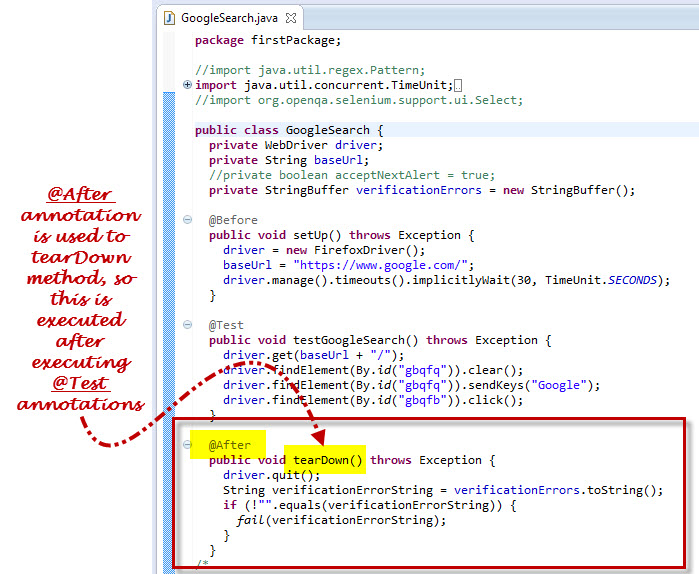
We are going to use a simple example regarding Account balances.Īccount.java package. First, Ill compare the annotations from JUnit 4 with those from JUnit 5. I dont have space to cover all of JUnit 5s annotations, but this section will get you started with the ones youre likely to use most. Here we have our basic Java Class that we need to test. Since JUnit 4, annotations have been a core feature of the testing framework, and that continues with JUnit 5. Every method that is annotated with won’t be executed. The Ignore annotation can be used when you want temporarily disable the execution of a specific test. Attention: The method attached with this annotation (similar to BeforeClass) must be defined as static void method() The AfterClass annotation can be used when a method needs to be executed after executing all the tests in a JUnit Test Case class so as to clean-up the expensive set-up (e.g disconnect from a database). reset some variables after execution of every test, delete temporary variables static void method() The After annotation indicates that this method gets executed after execution of each test (e.g. That happens when the test methods share computationally expensive setup (e.g. This life cycle callback is not related to JVM class loading. The method is invoked before an instance of this test class is created and any tests are invoked. BeforeClass: This annotation must be used on public static void no-arg method. The BeforeClass annotation indicates that the static method to which is attached must be executed once and before all tests in the class. JUnit framework provides following basic lifecycle annotations (all are method level annotations). The Before annotation indicates that this method must be executed before each test in the class, so as to execute some preconditions necessary for the static void method() To start with, we will test that the getEmployeeEmailId() method returns true for a valid email ID and false for an invalid one with two test methods.The Test annotation indicates that the public void method to which it is attached can be run as a test void method() Here, remember that the number of test methods to add and what they should do depends on the behavior of the EmployeeEmail class under test – not on the number of methods in it. To test the EmployeeEmail class, we will create a test class, EmployeeEmailTest and add test methods to it. We also wrote a getEmployeeEmailId() method to return an email ID from the Map, given a key. The isValidEmailId() method performs the email validation using a regular expression. In the EmployeeEmail class above, we wrote an addEmployeeEmailId() method that first checks whether an email ID is in valid format, and then adds it to a Map implementation. Public void addEmployeeEmailId(String key, String value)))$" Here is a Java class we will be writing some JUnit unit tests to test. This is where you write an assertion method.

This pattern is the recommended way to write unit test methods where you divide a method into three sections, each with a specific purpose: The main point of difference between JUnit4 and JUnit3 is the introduction of. Here, syntactic meta-data refers to the type of data representing the structure of a file with references to bytes, data types, and data structures.

Here weve added JUnit and Cucumber output formats: Java.
#Junit annotations code
Before we start using them, let’s have a quick overview of the Arrange, Act, Assert (AAA) pattern. JUnit Annotations refer to the syntactic meta-data added to the Java source code for better structure and readability. Configure the JSON output format for your automated tests on the TestRunner class.

JUnit provides support for assertions through a set of assert methods in the class. If the method under test behaves exactly as you specified in the assertion, your test passes. When you run the test, the assertion executes. For example, through an assertion you can check whether a method returns the expected value for a given set of parameters or a method correctly sets up some instance or class variables. JUnit AssertionsĪssertions, or simply asserts provide programmers a way to validate the intended behavior of code. We will learn about assertions, JUnit 4 annotations, and test suites. In this post, we will look at some core unit testing concepts and apply those using JUnit constructs.
#Junit annotations series
In the first part of the series on unit testing with JUnit, we looked at creating unit tests both using Maven and IntelliJ.


 0 kommentar(er)
0 kommentar(er)
